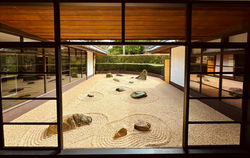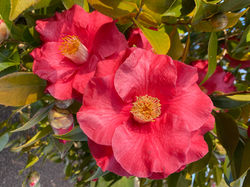
Admission Prices:
-
Adults $22.00
-
Concession $17.00
-
Family $52.00
-
Student $17.00
-
Locals $17.00
-
Children $12.00
-
Children under 5 years FREE
Please email info@cowragarden.com.au for tour group booking prices
We are a registered charity, and donations of $2 or more are eligible for tax deductions.
Opening Hours 8.30am- 5.00pm
 |  |  |  |  |  |
|---|---|---|---|---|---|
 |  |  |  |  |


Japanese Movable Cultural Heritage
There are a range of events and activities available to visitors to explore with over 300 items of Japanese movable cultural heritage located at the Garden at various times of the year.
Such activities include:
-
Guided tours and talks promoting the large collection of Japanese movable cultural heritage on display including such highlights as the Somenishiki vase standing 1.4 metres high which has a twin at the Japanese Imperial Palace in Japan and a Japanese scroll produced in 1750
-
Traditional Japanese ceremonies conducted in the Tea House showcasing the history and traditional application of items of Japanese movable cultural heritage
-
Festivals such as the annual Girl’s Day held in March represented by our Hina Matsuri dolls display promoting Japanese movable cultural heritage
-
Ceremonies such as Girls’ Day in March and Boys Day on May allowing the Garden to showcase its Japanese Craft
-
Regular talks and tours given by our Education staff exploring and promoting the Garden’s items of traditional Japanese movable cultural heritage
-
Advice is provided by the Director of Asian Art at the NSW Gallery, Jackie Menzies
Ninety percent of the items on exhibition have been donated by Japanese individuals and Japanese Companies. Each of the nine power companies of Japan has donated an item of movable cultural heritage which represents their particular are of Japan.
These items are regularly promoted by the Japanese Garden and Cultural Centre which holds events such as Japanese cultural days aimed at the promotion of the Japanese movable cultural heritage.
These events coincide with Japanese cultural days such as boy’s day represented by Carp, girl’s day represented by hina matsuri (Dolls festival) dolls display and ancestor’s day represented by stories of Japanese history etc. The collections of Japanese Ceramics are of world class with the standouts being a Somenishiki vase 1.4 metres high which has a twin at the Japanese Imperial Palace and a Japanese scroll produced in 1580.
There is a large collection of Tea Ceremony items a number of which are classified as items of Cultural Heritage which are not on display and it is planned to construct an authentic Japanese Closed Tea House so that these items may be displayed in a manner befitting their status.